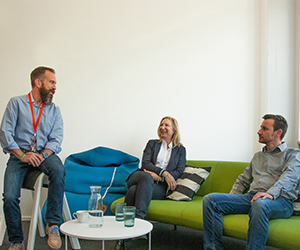What is the future of security in designing embedded systems?
Driven by the increased demands introduced by paradigms like IoT or edge computing, future embedded systems will require a much higher degree of interconnectedness. Therefore, the existing principle of providing security by designing physically separated hardware instances has to be revised, as these former isolated systems will now be exposed to a new form of threats. As a consequence, considering security aspects during design and development will play an integral role for future embedded software engineers.
TRENTOS – Secure IT right from the start
With TRENTOS, HENSOLDT Cyber therefore addresses secure IT right from the start, by building upon the proven seL4 ecosystem and consequently relying on trusted open-source software components. It also alleviates the entry to the quite complex area of developing secure embedded systems by abstraction, letting developers fully focus on creating secure applications without having to worry about lower-level details of the underlying architecture. From an instructor’s perspective, TRENTOS is therefore perfectly suited for teaching students the general principles of secure system design, by at the same time allowing them to use the respective functionality in an implicit fashion.
Why is it important for students to know TRENTOS?
In close cooperation with Prof. Baumgarten and the Chair of Operating Systems, HENSOLDT Cyber has therefore been offering the practical course “seL4 & TRENTOS“ to interested students at the renowned Technical University of Munich (TUM). The course provides an introduction to the fundamental aspects of TRENTOS, a novel seL4 microkernel based secure embedded operating system developed by HENSOLDT Cyber, and demonstrates its application in a practical manner.
Creating a real-world use case
The aforementioned proposal is reflected in the course structure, which is split into a lecture part that covers the required theoretical background and a practical part that teaches the students how to create their very first TRENTOS application on top of the popular Raspberry Pi platform. Within a subsequent team project phase, the students must then apply their knowledge to a selected real-world use-case.
Within the winter term 2020, they were mainly focusing on the topic TRENTOS device driver development, exemplarily integrating two SPI-based peripherals (covering the topics networking and storage), as can be seen in the pictures below.
